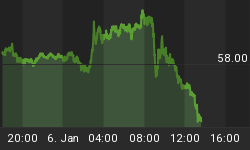The Euro finished lower on reports that a few Euro Region finance ministers are rejecting the idea of a bailout for Greece. Over the weekend, ahead of the start of today's two-day meeting in Brussels, German Finance Minister Schaeuble and French Finance Minister Lagarde downplayed the possibility of a bailout package. This news was contrary to reports last week which speculated on a $41 billion bailout proposal from German and France.
The failure to obtain financial aid could be a blow to the Greek economy as it tries to implement austere budget cutting measures. Pressure could continue on this currency from the hedge funds which still believe in the demise of the Euro. Additional concerns about the credit ratings of Spain, Portugal, Ireland and Italy are also weighing on the EUR USD.
Technically, the Euro daily trend is still up, but Monday's action indicates that a correction to 1.3609 may be necessary before new buyers arrive.
The British Pound traded sharply lower as traders speculated that the U.K. will be unable to service its debt, thereby increasing the odds of a credit downgrade by Moody's. The CFTC also reported in its Commitment of Trader's Report that the number of net short traders is at 67,549 as of March 2nd. Political uncertainty which could lead to a "hung parliament" also contributed to Monday's weakness. Selling pressure looks as if it will continue to build throughout the week.
The USD JPY finished flat after a two-sided trading session. An increase in demand for lower yielding assets led by the drop in U.S. equity markets helped send investors into the safety of the Japanese Yen at the mid-session. Earlier in the session, the USD JPY was trading higher on concerns that the Japanese government may begin implementing a plan to ease the rise in the Yen.
The decline in the Euro helped to halt the recent slide in the USD CHF. The Swiss Franc fell on increased speculation that the Swiss National Bank would intervene again to weaken its currency against the falling Euro. Technically, this market posted a daily closing price reversal bottom which could trigger a short-term rally to 1.0691.
The USD CAD finished flat after a two-sided trade. Plunging crude oil and a break in Gold after earlier strength helped to weaken the Canadian Dollar into the mid-session, but sellers took over late in the session to erase the small gain. Downside momentum is strong enough to take this market to parity. The absence of a "verbal intervention" by the Bank of Canada is an indication that it is going to allow the Loonie to work higher. Falling crude oil could limit gains in the Canadian Dollar.
The AUD USD traded lower most of the session after confirming Friday's closing price reversal top. Lower demand for higher risk assets was driving this market down. The strong comeback in the U.S. equity markets late in the session helped the Aussie erase most of its loss.
The daily chart indicates that a move to .8997 is likely if traders decide to begin dumping risk more aggressively.
Lower demand for risk and concerns about the New Zealand economy put downside pressure on the NZD USD most of the session, but this market was able to recover a good portion of the loss into the close. The sharp break in U.S. equity markets on Monday early in the session set off the early weakness, but the late session recovery in the equity markets triggered short-covering into the close. Risk sentiment is the key driver of this market at this time.
















